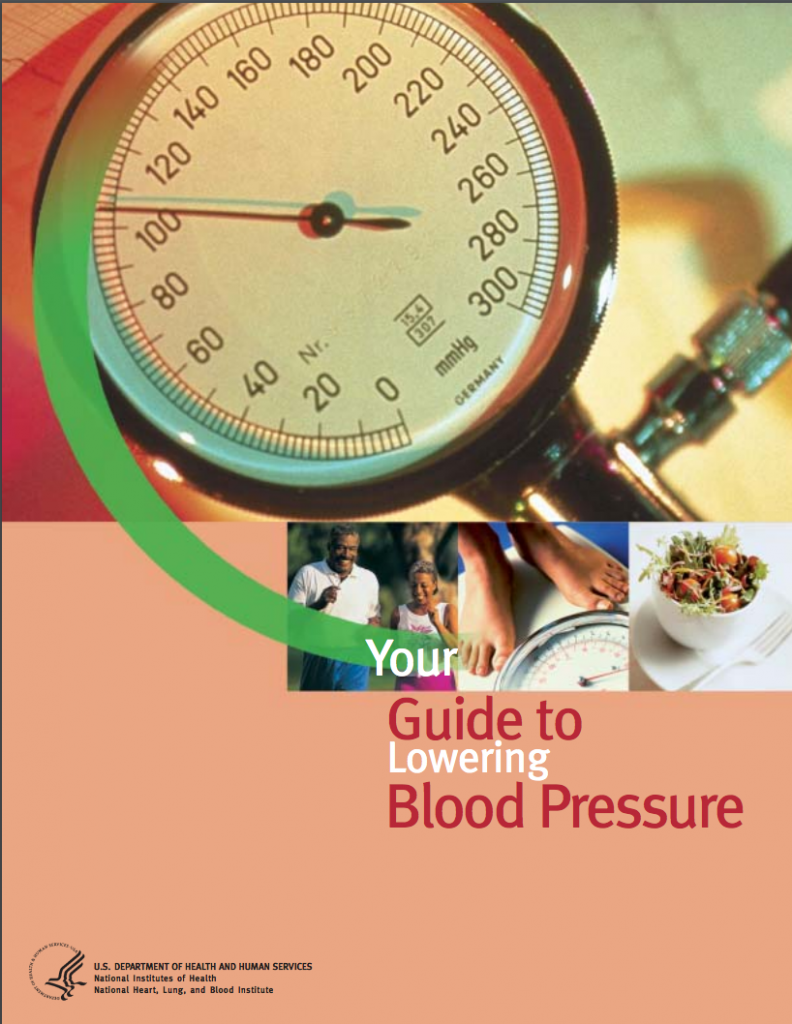11.18 – Consequences of Deficiency or Excess
Learning Objective
- Explain the consequences of excess or deficiency of water
- Describe what hypertension is and dietary approaches designed to reduce hypertension.
As with all nutrients, having too much or too little water has health consequences. Excessive water intake can dilute the levels of critical electrolytes in the blood. Water intoxication is rare, however, when it does happen, it can be deadly. On the other hand, having too little water in the body is common. In fact, diarrhea-induced dehydration is the number-one cause of early-childhood death worldwide. In this section, we will discuss subtle changes in electrolytes that compromise health on a chronic basis.
High-Hydration Status: Water Intoxication/ Hyponatremia
Water intoxication mainly affects athletes who over-hydrate. Water intoxication is extremely rare, primarily because healthy kidneys are capable of excreting up to one liter of excess water per hour. Over-hydration was unfortunately demonstrated in 2007 by Jennifer Strange, who drank six liters of water in three hours while competing in a “Hold Your Wee for a Wii” radio contest. Afterward, she complained of a headache, vomited, and died.
Low-Hydration Status: Dehydration
Dehydration refers to water loss from the body without an adequate replacement. It can result from either water loss or electrolyte imbalance, or, most commonly, both. Dehydration can be caused by prolonged physical activity without adequate water intake, heat exposure, excessive weight loss, vomiting, diarrhea, blood loss, infectious diseases, malnutrition, electrolyte imbalances, and very high glucose levels. Physiologically, dehydration decreases blood volume. The water in cells moves into the blood to compensate for the low blood volume, and cells shrink. Signs and symptoms of dehydration include thirst, dizziness, fainting, headaches, low blood pressure, fatigue, low to no urine output, and, in extreme cases, loss of consciousness and death. Signs and symptoms are usually noticeable after about 2 percent of total body water is lost.
Chronic dehydration is linked to higher incidences of some diseases. There is strong evidence that low-hydration status increases the risk of kidney stones and exercise-induced asthma. There is also some scientific evidence that chronic dehydration increases the risk of kidney disease, heart disease, and the development of hyperglycemia in people with diabetes. Older people often suffer from chronic dehydration as their thirst mechanism is no longer as sensitive as it used to be.
Coffee, Caffeine, hydration status, and health
If you were to do a “google” search to address the question, “Does drinking coffee lead to dehydration?”, the first hit would give you the impression that drinking coffee or consuming caffeine results in dehydration. However, no evidence of dehydration has been found with moderate intake.
How much coffee is considered safe to drink? “Consumption of 3 to 5 standard cups of coffee daily has been consistently associated with a reduced risk of several chronic diseases.”1
Coffee, tea, and moderate caffeine consumption have been associated with decreased risks of some chronic diseases. Consuming caffeine intakes of less than 400 mg/day for adults or less than 200 mg/day for pregnant and lactating women is recommended to avoid adverse effects.1 Refer to the review article from van Dam et al. linked below for a thorough analysis of this topic.
1 van Dam RM, Hu FB, and Willett, WC. Coffee, Caffeine, and Health. N Engl J Med 2020; 383:369-378 DOI: 10.1056/NEJMra1816604 Accessed July 23, 2020.
Heat Stroke
Heatstroke is a life-threatening condition that occurs when the body temperature is greater than 105.1°F (40.6°C). It is the result of the body being unable to sufficiently cool itself by thermoregulatory mechanisms. Dehydration is a primary cause of heat stroke as there are not enough fluids in the body to maintain adequate sweat production, and cooling of the body is impaired. Signs and symptoms are dry skin (absence of sweating), dizziness, trouble breathing, rapid pulse, confusion, agitation, seizures, coma, and possibly death. Dehydration may be preceded by heat exhaustion, which is characterized by heavy sweating, rapid breathing, and fast pulse. The elderly, infants, and athletes are the most at risk for heatstroke.
Hypertension
Blood pressure is the force of moving blood against arterial walls. It is reported as the systolic pressure over the diastolic pressure, which is the greatest and least pressure on an artery that occurs with each heartbeat. The force of blood against an artery is measured with a device called a sphygmomanometer. The results are recorded in millimeters of mercury, or mmHg. Desirable blood pressure ranges between 90/60 and 120/80 mmHg. Hypertension is the scientific term for high blood pressure and defined as a sustained blood pressure of 130/80 mmHg or greater. Hypertension is a risk factor for cardiovascular disease, and reducing blood pressure has been found to decrease the risk of dying from a heart attack or stroke. Nearly half (45.6%) of U.S. adults have hypertension according to the American Heart Association’s 2018 Update on Heart Disease and Stroke Statistics.

There has been much debate about the role sodium plays in hypertension. In the latter 1980s and early 1990s the largest epidemiological study evaluating the relationship of dietary sodium intake with blood pressure, called INTERSALT, was completed and then went through further analyses.1,2
More than ten thousand men and women from thirty-two countries participated in the study. The study concluded that higher sodium intake is linked to an increase in blood pressure. A more recent study, involving over twelve thousand US citizens, concluded that a higher sodium-to-potassium intake is linked to higher cardiovascular mortality and all-cause mortality.3
The DASH-Sodium trial was a clinical trial that evaluated the effects of a specified eating plan with or without reduced sodium intake. The DASH diet is an eating plan that is low in saturated fat, cholesterol, and total fat. Fruits, vegetables, low-fat dairy foods, whole-grain foods, fish, poultry, and nuts are emphasized while red meats, sweets, and sugar-containing beverages are mostly avoided. In this study, people on the low-sodium (1500 milligrams per day) DASH diet had mean systolic blood pressures that were 7.1 mmHg lower than people without hypertension not on the DASH diet. The effect on blood pressure was greatest in participants with hypertension at the beginning of the study who followed the DASH diet. Their systolic blood pressures were, on average, 11.5 mmHg lower than participants with hypertension on the control diet.4
Following the DASH diet not only reduces sodium intake, but also increases potassium, calcium, and magnesium intake. All of these electrolytes have a positive effect on blood pressure, although the mechanisms by which they reduce blood pressure are largely unknown. Refer to Chapter 3.7 for more information on specifics of the diet. Also, refer to Chapter 11.5 for more information on sources of sodium in the diet.
While some other large studies have demonstrated little or no significant relationship between sodium intake and blood pressure, the weight of scientific evidence demonstrating low-sodium diets as effective preventative and treatment measures against hypertension led the US government to pass a focus on salt within the Consolidated Appropriations Act of 2008. A part of this act tasked the CDC, under guidance from the IOM, to make recommendations for Americans to reduce dietary sodium intake. This task is ongoing and involves “studying government approaches (regulatory and legislative actions), food supply approaches (new product development, food reformulation), and information/education strategies for the public and professionals.”5
1 Intersalt Cooperative Research Group. Intersalt: An International Study of Electrolyte Excretion and Blood Pressure. Results for 24 Hour Urinary Sodium and Potassium Excretion. BMJ. 1988; 297(6644), 319–28. Accessed June 30, 2019.
2 Elliott P, Stamler J, et al. Intersalt Revisited: Further Analyses of 24 Hour Sodium Excretion and Blood Pressure within and across Populations. BMJ. 1996; 312(7041), 1249–53. Accessed June 30, 2019.
3 Yang Q, Liu T, et al. Sodium and Potassium Intake and Mortality among US Adults: Prospective Data from the Third National Health and Nutrition Examination Survey. Arch Intern Med. 2011; 171(13), 1183–91. Accessed June 30, 2019.
4 Sacks, FM, Svetkey LP, et al. Effects on Blood Pressure of Reduced Dietary Sodium and the Dietary Approaches to Stop Hypertension (DASH) Diet. N Engl J Med. 2001; 344(1), 3–10. Accessed June 30, 2019.
5 Institute of Medicine (US) Committee on Strategies to Reduce Sodium Intake; Henney JE, Taylor CL, Boon CS, editors. Strategies to Reduce Sodium Intake in the United States. Washington (DC): National Academies Press (US); 2010. Available from: https://www.ncbi.nlm.nih.gov/books/NBK50956/doi: 10.17226/12818. Accessed June 30, 2019.
Try it Yourself
The National Heart, Lung, and Blood Institute has prepared an informative fact sheet on the DASH diet.
Use the food-group charts to help design a daily menu that follows the DASH eating plan.

Salt Sensitivity
High dietary intake of sodium is one risk factor for hypertension and contributes to high blood pressure in many people. However, studies have shown that not everyone’s blood pressure is affected by lowering sodium intake. About 10 to 20 percent of the population is considered to be salt-sensitive, meaning their blood pressure is affected by salt intake. Also, if hypertension runs in a person’s family, that person is more likely to be salt-sensitive. Because reducing dietary salt intake will not work for everyone with hypertension or a risk for developing the condition, there are many opponents of reducing dietary salt intake at the national level. Keep in mind that a more important factor may be the quantity of potassium, magnesium, and calcium in the diet. The higher the intake of these minerals the more likely the individual will have lower blood pressure.
key Takeaways
- Water intoxication mainly affects athletes who over-hydrate.
- Dehydration refers to water loss from the body without an adequate replacement.
- Heatstroke is a life-threatening condition that occurs when the body temperature is greater than 105.1°F (40.6°C).
- Hypertension is the scientific term for high blood pressure and defined as a sustained blood pressure of 130/80 mmHg or greater.
- Hypertension is a risk factor for cardiovascular disease, and reducing blood pressure has been found to decrease the risk of dying from a heart attack or stroke.
- Following the D.A.S.H. diet not only reduces sodium intake, but also increases potassium, calcium, and magnesium intake. The D.A.S.H. diet has been shown to decrease blood pressure in individuals with hypertension.
Contributors
University of Hawai’i at Mānoa Food Science and Human Nutrition Program: Allison Calabrese, Cheryl Gibby, Billy Meinke, Marie Kainoa Fialkowski Revilla, and Alan Titchenal

